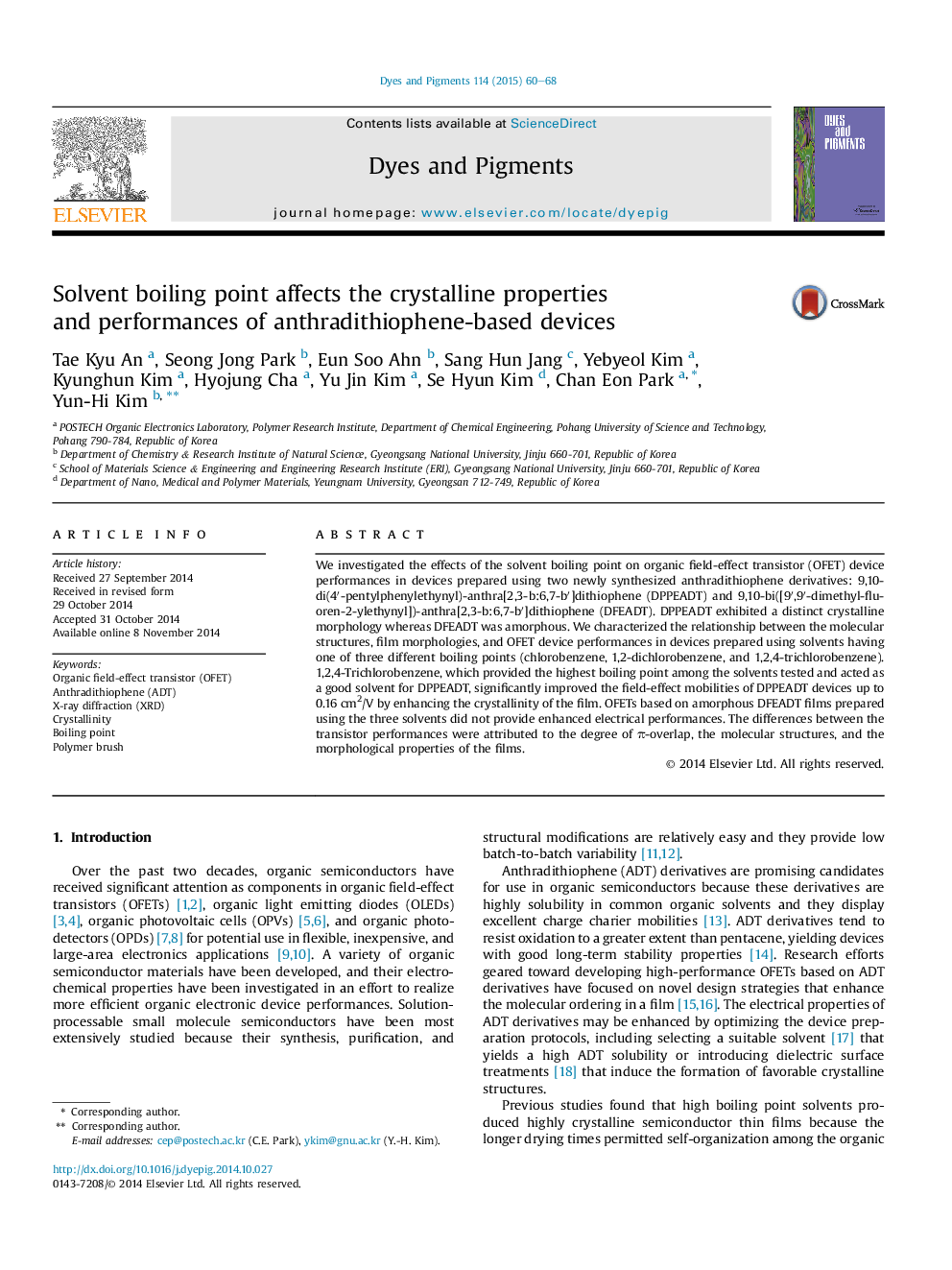| کد مقاله | کد نشریه | سال انتشار | مقاله انگلیسی | نسخه تمام متن |
|---|---|---|---|---|
| 175980 | 458929 | 2015 | 9 صفحه PDF | دانلود رایگان |
• We investigated the effects of the solvent boiling point on organic field-effect transistor (OFET) device performances.
• A PS-brush increased the wettability of the film on the SiO2 substrate from common high boiling point (b.p.) solvents.
• The effects of the high b.p. solvent were only observed in the crystalline semiconductor film.
• OFET performances may be optimized through the use of high b.p. solvent combinations and PS-brush surface treatments.
We investigated the effects of the solvent boiling point on organic field-effect transistor (OFET) device performances in devices prepared using two newly synthesized anthradithiophene derivatives: 9,10-di(4′-pentylphenylethynyl)-anthra[2,3-b:6,7-b′]dithiophene (DPPEADT) and 9,10-bi([9′,9′-dimethyl-fluoren-2-ylethynyl])-anthra[2,3-b:6,7-b′]dithiophene (DFEADT). DPPEADT exhibited a distinct crystalline morphology whereas DFEADT was amorphous. We characterized the relationship between the molecular structures, film morphologies, and OFET device performances in devices prepared using solvents having one of three different boiling points (chlorobenzene, 1,2-dichlorobenzene, and 1,2,4-trichlorobenzene). 1,2,4-Trichlorobenzene, which provided the highest boiling point among the solvents tested and acted as a good solvent for DPPEADT, significantly improved the field-effect mobilities of DPPEADT devices up to 0.16 cm2/V by enhancing the crystallinity of the film. OFETs based on amorphous DFEADT films prepared using the three solvents did not provide enhanced electrical performances. The differences between the transistor performances were attributed to the degree of π-overlap, the molecular structures, and the morphological properties of the films.
Journal: Dyes and Pigments - Volume 114, March 2015, Pages 60–68
